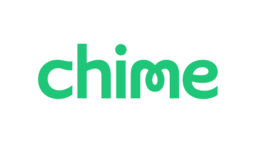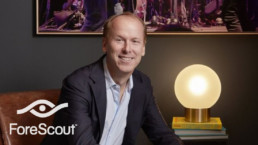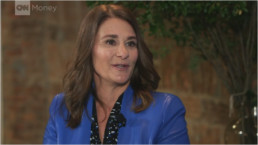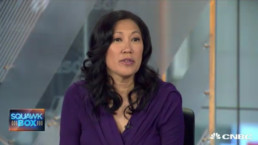Aspect Ventures Promotes Lauren Kolodny to Partner
Aspect’s first employee has risen to a new rank at the female-led firm.
At the age of 23, Lauren Kolodny was named Brown University’s youngest member of the board of trustees. During her time on the board, Ms. Kolodny met Theresia Gouw, then a partner at Accel Partners.
That meeting proved to be the launching point for Ms. Kolodny’s career in venture capital. When Ms. Gouw started Aspect Ventures in 2014, Ms. Kolodny was her first hire.
On Tuesday, the firm announced Ms. Kolodny has been promoted to partner.
Ms. Kolodny will be one of four partners at the firm, including Ms. Gouw, Jennifer Fonstad and Kendra Ragatz, who serves as an operating partner. Aspect Ventures is raising a second fund with a target of $175 million, according to the firm’s June filing with the Securities and Exchange Commission.
In the male-dominated venture industry, Aspect Ventures is one of only a handful of firms with an all-female partnership. Ms. Kolodny said there are some male members on the investing team that bring a diverse perspective, but she said it has been a privilege to work at a firm founded by women.
“I’m very aware of a lot of the dynamics in the industry,” Ms. Kolodny said. “I work in a very supportive culture in that sense.”
Ms. Kolodny’s investments as a principal have covered a broad range of sectors, from software-as-a-service companies addressing the future of work to financial services. She led or co-led Aspect’s investments in Troops, Gusto and TalkIQ.
Earlier Ms. Kolodny worked in product marketing at Google and at Cowboy Ventures. She also holds an M.B.A. and masters in sustainable design from Stanford University.
Investor Spotlight: Jennifer Fonstad & Theresia Gouw
Watch Sallie Krawcheck's interview with Aspect's Jennifer Fonstad & Theresia Gouw
(Watch on Vimeo)
Your Next Gig: Map the Streets for Self-Driving Cars
I went for a drive in San Francisco’s Mission District last month. It was late morning, and there wasn’t much traffic. As I wended my way through the side streets, I avoided a double-parked armored car and steered around construction sites. Though it might have seemed like an aimless outing, my brief sortie was anything but. Every centimeter I drove, every object I encountered, and even the double line I crossed to avoid the Brinks truck was being recorded by a device affixed across the top edge of the windshield, just above the rearview mirror.
(Read on Wired)
Soon, thousands of people might be installing those gadgets in their cars, hoping to make some extra bucks—and, in the process, contributing to the next great crowdsourced project: a ridiculously detailed and constantly updated map of the world’s roads, readable only by the vast swarm of self-driving cars that will populate our byways.
The device is made by a San Francisco-based startup called Mapper, which comes out of stealth today after a year of development. The company’s maps don’t resemble the classic gas station fold-outs, or even the ones made by Google or Apple that have supplanted them. They are meant for machines, not humans, and when you see them rendered, they are made up of glowing pixels where objects, lane markers, and traffic signals are delineated by rough shapes and tell-tale colors. These are the maps of the future, and allegedly the bedrock of a multi-billion-dollar market. Self-driving cars can’t operate without such maps.
“As humans, if we are blindfolded and dropped in a new place, we'll find our bearings—we have millions of years of common sense to help guide our awareness,” says Nikhil Naikal, Mapper’s CEO. “A machine, on the other hand, needs a large amount of up-to-date 3D map data to have foresight of what to expect around the corner. And that's exactly the kind of maps that we deliver.”
Currently, companies that are testing autonomous vehicles—such as Waymo (spun out of Google’s research division), Uber, General Motors, and others—have to make their own maps. It’s a painstaking process that requires people to drive vans equipped with sophisticated lidar (a combination of lasers and radar) equipment over designated roads in multiple passes to log every curb height, fire hydrant, and lane marking. As a result, those vehicles are virtually fenced in by the pre-mapped region; a Waymo car’s self-driving mode won’t even kick in unless it senses that it’s in a mapped zone.
Mapper’s solution is to create an army of part-time workers to gather data that will accrue to a huge “base map” for autonomous cars, and to update the map to keep it current. Think of the work as an alternative to driving for Uber and Lyft, without having to deal with customer ratings or backseat outbursts from Travis Kalanick.
The key to Mapper’s scheme is that it can create high-definition 3D maps without using lidar. That expensive and sometimes finicky combination of lasers and radar has become the standard not only for piloting autonomous cars, but also for producing the cartography that grounds them. Mapper’s founders are PhD engineers who have participated in DARPA challenges and created an indoor mapping startup, Flyby Media (bought by Apple), and the company believes it can match lidar-quality results by relying on sophisticated modeling and data-compression techniques that allow it to use over-the-counter parts to snare data.
The company has created a femur-sized plastic device called the S1, which has multiple cameras and sensors that goes over one’s dashboard and a single cable connecting it to the cigarette lighter for power. It wirelessly syncs with a driver’s iPhone. “It cost $350 to make, it’s composed of commodity parts, and it is designed so it can be easily installed in any car,” says Naikal. After installation, the Mapper app directs the driver to a predetermined route and tells him or her how quickly to go. More accurately, how slowly to go—Naikal says the optimal velocity for a mapping session is between 10 and 30 miles an hour. (Mapper might consider issuing drivers bumper stickers identifying why those cars are creeping.)
Mapper doesn’t expect its drivers to work full time; Naikal says that more than four hours following the exacting directions from the app results in “cognitive overload.” Ideally, his drivers will use the app for an hour or two at a time. In addition, when not taking directions from the app, drivers can leave the system on, and Mapper will collect the data from wherever they wander. (This passive mode also pays, but much less.) “This can be anyone who wants to have a side hustle, who wants to make a little bit of money on the side,” says Naikal. “It could be construction workers; it could be people that are just out on the street a lot, who want to have an ability to do something cool and get paid to do it.”
Because a lot of the value that Mapper provides lies in updating the map—city streets might need refreshing at least once a week to reflect construction, new traffic patterns, and even grass growing higher—the work will be consistent. Mapper’s chief product officer, Jonathan Glanz, estimates that when the company scales up, it will be able to maintain its base map with about 10 thousand mappers—far fewer than Uber’s hundreds of thousands. “We won’t need a humongous fleet because we can select the tasks for mapping,” says Alonso Patron, Mapper’s chief technology officer.
Once it creates the base map and keeps updating it—“like a living organism,” says Naikal—Mapper can license the product to customers such as automakers, transportation services like Uber, and even technology companies like Apple and Waymo. What all of those customers have in common is that they are currently paying to do their own mapping, and would have to spend a lot more money for complete coverage. And, Naikal says, they are reluctant to share data with each other—why would Toyota trust Ford’s data? If you had one map—and evolved it using contracted drivers and other data submitted by the customers themselves—it would be like the Intel Inside of 3D maps, the standard digital atlas for the autonomous vehicles that will be our future chauffeurs. If companies want to customize that map for their needs, Mapper will accommodate them. “We want to have one base map,” Naikal says. “We focus on building that core base layer ourselves, owning the data, making it available for all.” When customers have specific needs they can send their own data to Mapper, which can layer it on top of its base map.
After testing the system in Old Alexandria, Virginia, earlier in the year, Mapper is now busily doing a digital Mason-Dixon on San Francisco, hoping to finish a base map of the city by Thanksgiving. The mapping will move to other cities over the next 14 months and then expand to urban centers overseas. After that, the company will turn to rural areas, eventually hoping to capture everything, so that autonomous cars will have a data cushion wherever they roam.
Once Mapper develops its base map, it can make money not only from the autonomous car manufacturers but also from other customers who might make use of the world’s most detailed guide to roadways: utilities maintaining infrastructure, insurance companies looking for hazards, and, perhaps most intriguing of all, augmented reality ventures that might want to transform your road trip with a stream of personalized billboards. (As for privacy issues, Mapper says that it’s not going to collect information like license numbers or house addresses, though its customers may well do so on proprietary layers they develop on top of the Mapper base map.)
“We feel that there might be use cases that we aren't even aware of,” says Naikal.
Mapper isn’t the only company with these ambitions. Like a sudden traffic jam on 101, a swarm of competitors has popped into the 3D mapping world, each with its own approach but all hoping to become Rand McNally for robots. “It’s a pretty crowded space,” says James Wu, CEO of DeepMap, which has raised $32 million in funding from primo VCs such as Andreessen Horowitz and Accel. (Mapper won’t reveal its funding, except to specify that none of it comes from potential customers.) Wu’s company also uses crowdsourcing as one of its data-collecting tactics.
A Y Combinator company from this year’s winter batch, Lvl5, also offers drivers some pocket change for mapping—in this case, simply attaching their phones to the dashboard and using the built-in cameras to capture data. Lvl5 CEO Andrew Kouri, who formerly worked for Tesla, says that if he sends enough drivers down a road, after 6 to 12 passes, Lvl5 will have good enough info to use its algorithms to add to the map. It pays drivers between one and five cents a mile, but doesn’t send them on pre-selected routes. “We use a lot of Uber drivers,” says Kouri.
Another company, Civil Maps, uses a relatively costly roof-mounted collection device so that developers in the field can contribute to its crowdsourced base map. (Ford is a funder.) Carmera, whose mission is to “democratize autonomous vehicle data,” partners with companies that operate fleets of cars or trucks. And one of the most formidable players is HERE, the spinoff from the broken pieces of Nokia. It has created a platform called Sensoris that accepts data from multiple partners.
Each of these companies hopes to land in a winner’s circle that might be big enough for only one. Mapper believes it has the unique combination of scale and quality to win. “Obviously it’s in everyone’s best interest to have one player who does this,” says Lvl5’s Kouri. Right now, it’s hard to gauge who’s got the inside track. All are scrambling to snare major customers, particularly automakers. I spoke to an executive at one major potential customer who is considering a pilot project with Mapper. “It’s hard to use cameras to do the work of lidar, but it comes down to expertise and history,” he says. “I don’t know if anyone else can do what the Mapper guys can do. Early results say they can do it.”
If a base map is adopted by Detroit, why wouldn’t the tech companies themselves sign on? For instance, Waymo says that for now its mapping is tied to development, but once its systems mature, it may well consider outsourcing the work.
But while it’s uncertain which company might emerge as the mapmaker who defines the world for machines, it does appear that we all might wind up contributing to it. Though Mapper’s founders don’t say it directly, those 10,000 part-timers who rack up a few bucks following the company’s exacting instructions will dwindle when Mapper starts making use of the built-in, road-facing cameras that will inevitably be standard equipment in the cars of the near future. Essentially, we will all have the technology to perform the functions of Mapper’s S1 windshield device—and these might be turned on by default, so we’ll do the work for free.
To fill in areas that aren’t reliably covered by camera-equipped cars, Mapper could still use contractors to follow its routes and ignore the impatient motorists who tailgate them. And when the era of autonomous cars does arrive, they can be dispatched to perfectly follow Mapper’s directions. No matter who is collecting the data, the robots will get their maps.
IoT-focused cybersecurity startup ForeScout files for initial public offering
“Internet of things”-focused cybersecurity firm ForeScout Inc. is going public.
The company announced Monday that it had filed its paperwork with the U.S. Securities and Exchange Commission for an initial public offering.
(Read on SiliconAngle)
The number of shares to be offered in the IPO and their price are described as having “not yet been determined,” though the company did say it was looking to raise $100 million, a common placeholder figure.
Founded in 2000, ForeScout offers a cybersecurity service that allows enterprises to see all sorts of devices the instant they connect to the network. The company’s platform integrates with leading network, security, mobility and information technology management products to allow users to control devices when they are connected to the network and orchestrate information sharing and operation among various different types of security tools to accelerate incident response.
“We have pioneered an agentless approach to network security to protect organizations against the emerging threats that exploit the billions of devices connected to organizations’ networks,” the company said in its S-1 filing. “The traditional approach of relying on a corporate-installed software agent to secure a device has significant limitations in today’s world as devices are developed using a wide variety of platforms and operating systems that cannot support agents.”
By the numbers, ForeScout reported revenue of $166.8 million in 2016, up from $126 million in 2015, showing continued growth with revenue of $90.6 million for the first six months of 2017. Still, losses have continued to grow as well, with the company reporting losses of $27.3 million in 2015, $74.8 million in 2016 and $47.7 million to July 31 this year.
ForeScout last took venture capital in January 2016, when it raised $76 million, and it has raised about $156 million to date. Previous investors include Accel Partners, Amadeus Capital Partners, Aspect Ventures, BCS Growth Fund, Cross Creek Advisors, Founders Circle Capital, ITOCHU Corp., Meritech Capital Partners, Oxx. Pitango Venture Capital and Wellington Management.
As of its last round, the company was described as having a valuation of “$1 billion or more.” Although the valuation for the IPO has not been disclosed, it would be fair to guess that it won’t be lower than that. A date has not been set. ForeScout will list on the NASDAQ under the stock symbol “FSCT.”
Morgan Stanley & Co. LLC, J.P. Morgan Securities LLC, and Citigroup Global Markets Inc. are acting as lead book runners, with BofA Merrill Lynch and UBS Securities LLC assisting.
Chime Announces $18 Million Series B to Accelerate Growth; Surpasses 500,000 Bank Accounts
Chime, the leader in mobile banking that helps members avoid fees and automate their finances, today announces $18 million in Series B financing, led by global venture fund Cathay Innovation. With over 500,000 bank accounts opened since the company's 2014 launch, this latest round of financing will be used to accelerate growth and to develop new products to improve financial lives.
(Read on Business Insider)
"At Cathay, we look at fintech investment opportunities across the globe and we've never seen so much customer love for a banking service," said Denis Barrier, Co-Founder and CEO of Cathay Innovation. "Chime members engage with the app every day and trust Chime as the deposit account for their paycheck. It's much more than just a mobile app. With triple digit growth in new bank account openings in the last year, Chime has emerged as the clear leader in the US challenger banking segment."
Cathay Innovation led the round from its $320 million venture fund and offers a global investment network bridging North America, Europe and China. Other new investors in the round include Northwestern Mutual Future Ventures and Omidyar Network which invested through their Financial Inclusion initiative. Existing investors Crosslink Capital, Aspect Ventures, Forerunner Ventures and Homebrew also participated in the round bringing Chime's total funding to $36MM.
"Look at any of the headlines these days and it's clear that traditional US banks continue to fail millions of Americans with adversarial practices and opaque fee structures," said Chris Britt, CEO and Founder of Chime. "This financing allows us to rapidly scale a new approach to mobile banking that actually improves financial lives."
Chime's Bank Fee Finder exposed the impact of traditional banks' predatory practices and found that on average bank customers pay $329 in fees annually. By eliminating overdrafts, Chime has saved its members an estimated $100MM in potential overdraft fees to date. Chime has also helped members increase their savings. While the majority of Americans have less than $500 in savings according to Bankrate, members who enrolled in Chime's automatic savings program have tripled their average monthly savings.
In addition to investing in growth, the company will use this latest round of funding to launch new features to help members automate more aspects of their financial lives. Chime will also introduce new services through its open APIs and partnerships with leading financial companies, so that members can use their Chime account as a connected hub to manage all of their financial accounts.
How 'the invisible network' poses a major security threat
Imagine a hacker remotely turning off a life support machine in a hospital, or shutting down a power station. These are the nightmare scenarios we face because many organisations haven't a clue how many unsecured devices are connected to their networks, cyber-security experts warn.
(Read post on BBC News)
It was an ordinary day at a busy hospital - doctors, nurses and surgeons rushed about attending to the health of their patients.
For Hussein Syed, chief information security officer for the largest health provider in New Jersey, it was the health of his IT network that was keeping him busy.
And today, he was in for a surprise.
He knew he presided over a complex web of connected medical devices, computers, and software applications spread across RWJBarnabas Health's 13 hospitals.
This included about 30,000 computers, 300 apps, a data centre, as well as all the mobile phones hooking up to the hospitals' wi-fi networks.
Company mergers had only added to the complexity of these sprawling IT systems.
But when he used a specialist IoT cyber-security program to carry out a full audit, he discovered that there were in fact 70,000 internet-enabled devices accessing the health firm's network - far more than he'd expected.
"We found a lot of things we were not aware of," Mr Syed tells the BBC, "systems that weren't registered with IT and which didn't meet our security standards."
These included security cameras and seemingly innocuous gadgets such as uninterruptible power supplies (UPSs) - units that provide back-up battery power in the event of a power cut.
"These unidentified devices could definitely have been access points for hackers who could have then found high-value assets on our network," says Mr Syed.
Hack in to a UPS and you could potentially switch off life-critical machines, he explains. Or hackers could steal patient data, encrypt it, then demand a ransom for its safe return.
On the black market "health data is worth 50 times more than credit card data", says Mr Syed.
The audit "helped us protect our network," he adds, preferring not to dwell on what might have been.
Mike DeCesare, chief executive of ForeScout, the software provider Mr Syed brought in, says: "Businesses typically underestimate by 30% to 40% how many devices are linked to their network. It's often a shock when they find out.
"With the proliferation of IoT [internet of things] devices the attack surface for hackers has increased massively.
"Traditional antivirus software was designed on the assumption that there were just a few operating systems. Now, because of IoT, there are thousands."
ForeScout's software monitors a company's network and indentifies every device trying to access it, "not just from its IP [internet protocol] address, but from 50 other attributes and fingerprints", says Mr DeCesare.
The reason for these other layers of security is that it is "relatively easy" for hackers to mask the identity of a particular device - known as MAC [media access control] spoofing.
So ForeScout's software takes a behavioural approach to monitoring.
"We look at the traffic from all those different devices and analyse whether they are behaving like they should," he says.
"Is that printer behaving like a printer? So why is it trying to access other devices on the network and break in to the system?
"If we spot aberrant behaviour we can disconnect the device from the network automatically."
Services from network monitoring firms - ForeScout, Solar Winds, IBM, SecureWorks, Gigamon and others - are becoming increasingly necessary in a world where everything - from lamp-posts to lawn sensors - is becoming internet-enabled.
According to Verizon's latest State of the Market: Internet of Things report there are now 8.4 billion connected devices - a 31% increase on 2016 - and $2tn (£1.5tn) will have been spent on the technologies by the end of 2017.
But as Verizon points out, lack of industry-wide standards for IoT devices is giving businesses major security concerns.
Stories of cyber-attacks mounted on the back of insecure devices such as video cameras have highlighted the issue.
"IoT security is one of the biggest challenges we're facing right now," says Darren Thomson, chief technology officer and vice president, technology services at cyber-security firm Symantec.
The difficulty is that IoT devices are generally simple, cheap and low-powered, without the capability of running the antivirus programs operated by traditional computers.
"The challenge with critical infrastructure is that it wasn't built with security in mind," says Tom Reilly, chief executive of Cloudera, the IoT and data analytics platform.
"Smart cities are a great playing field for hackers - changing traffic lights, turning elevators on and off - there are many security exposures.
"We need to get ahead of them."
This necessitates a different approach to security, a growing number of experts believe.
In April, telecoms giant Verizon launched what it calls its IoT "security credentialing" service, whereby only trusted, verified devices are allowed to access a company's network.
Meanwhile, Cloudera has formed a strategic partnership with chip maker Intel.
Melinda Gates on VC industry & investing with Aspect Ventures
Melinda Gates: The VC industry 'needs to clean up its act'
Melinda Gates first heard about the controversial memo written by an engineer at Google from her husband, Bill -- the billionaire founder of Microsoft.
"He basically said, 'You're not going to believe this,'" Gates told Poppy Harlow at CNNMoney's American Opportunity breakfast in New York on Tuesday.
(Read post on CNN Money)
In August, Google found itself at the epicenter of the debate over sexism in Silicon Valley when engineer James Damore claimed in a viral 3,300-word essay that women aren't as well represented in the tech industry because they are biologically different than men.
That perspective didn't sit well with Gates.
"When I read that Google memo, I didn't know whether to be sad or whether to be outraged. And I think the sadness came first. The sadness to see that kind of point of view," she said in her first public remarks on the issue.
Gates, who studied computer science and worked as a developer at Microsoft (MSFT, Tech30) until 1996, said she decided not to speak out at the time because she thought "enough people were."
She pointed to an op-ed by YouTube CEO Susan Wojcicki as an exemplary response.
In her column, Wojcicki relays a conversation with her daughter about the memo. She goes on to talk about how she continues to experience sexism within the tech industry, and how she empathizes with the women at Google who now face "a very public discussion about their abilities."
"To me, that was the most poignant piece and nothing else needed to be said for me," said Gates, who is co-chair of the Bill & Melinda Gates Foundation.
Gates said the industry's gender problem is clear just by looking at the numbers.
When she was in college, 37% of computer science graduates were female. Now it's 18%, she said.
Things got worse when games started to become more "genderized," with a focus on sports and killing, she said.
"[A]ll the sudden, when games started to become very genderized, you started to see the downtick. This huge falling off of women wanted to go into computer science," she said.
Making matters worse are hidden biases throughout the male-dominated tech industry, she said. The venture capital community, in particular, "needs to clean up its act."
"I think they also fund what they know," Gates said. "Today, they know male, white, Caucasian, in a hoodie, looks like a geek, comes from an Ivy League or equivalent school. That's their funding criteria."
Only 6% of VC partners today are women, Gates added, and a mere 3% of companies led by women get VC funding.
Gates is tackling the problem with her own money. Over the next 18 months, she plans to finance groups with funding models that show a commitment to gender equity. She's already partnered with Aspect Ventures, a San Francisco-based VC firm founded by two women.
"Moving money is what will move the industry for women," she said.
Gender discrimination is something Gates says she personally experienced "all the way through" her studies and career.
Sexism was less of an issue inside Microsoft, Gates said, but it would occur when she'd attend industry events like conferences.
Even in her philanthropic work, it's a recurring issue.
"I still walk in places with Bill, and people... they assume he's the smartest person in the room, almost no matter if it's a man or a woman who walks in," Gates said. "But as soon as I open my mouth, you can sometimes look at the person's face and they're kind of like, 'Wow, she knows something, too.'"
Gates says such hidden biases influence both men and women and are made worse by the fact that they're so rarely addressed.
"We don't talk about what's going on," she said. But now she believes things are finally starting to change.
"Tech is invasive," Gates said. "It's in all of our lives. Don't you want the people who are sitting behind that, programming it, to be people who have diverse points of view?"
New Aspect Ventures COO talks VC operations, diversity
Aspect Ventures, a female-founded VC firm, has appointed Kendra Ragatz as COO and general partner. Ragatz is stepping into a two-fold role: In addition to making investments, she's in charge of growth and development for the firm itself.
(Read post on PitchBook)
Theresia Guow and Jennifer Fonstad founded Aspect in 2014 and closed its debut vehicle on $150 million the next year. The firm, which is currently raising a second fund with a $175 million target, is focused on early-stage investments in several industries, including security, digital health, AI and autonomous vehicle software. It writes seed and Series A checks.
As of now, Aspect has backed more than 30 startups, including travel booking platform HotelTonight and Chime, the provider of a savings app.
A unique role: venture capital COO
The COO position is relatively unique among investment firms. Because of the nature of the business, private equity and venture capital investors tend to devote their time, energy and finances to helping other companies grow.
"Today, more and more VC firms are focusing on running their own businesses to the same degree they focus on helping their portfolio companies," said Ragatz (pictured) in an interview with PitchBook.
In her new role, Ragatz will do just that: She'll help develop Aspect Ventures by focusing on recruiting, finance and operations, in addition to mentoring the firm's investors. Before joining the Bay Area-based VC firm as an operating partner at the end of 2016, Ragatz held more traditional roles at investment firms including DAG Ventures and Steamboat Ventures, Disney's venture capital arm.
In addition to her COO duties, Ragatz will have a more traditional partner role. She'll seek out new investment opportunities for Aspect, some of which will likely be in the health and wellness sector.
Women in VC: 'Diversity generates better outcomes'
A VC firm founded and run by two women is something of a rarity in Silicon Valley. Ragatz said the firm's co-founders, Guow and Fonstad, are some of the only female investment professionals she's ever worked with. While the firm doesn't necessarily make a point of investing in female-founded startups, its portfolio does include a fair number of them.
The percentage of global VC deals for companies with at least one female founder sits at about 17%, per PitchBook data. Here's a closer look at VC investment in female-founded companies over the last decade, as of March 2017:
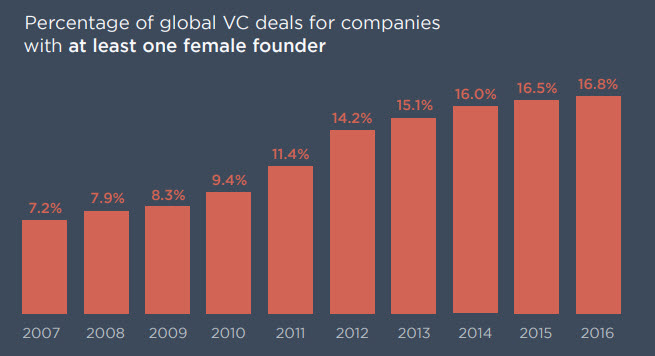
*The chart above is from a datagraphic PitchBook produced in March.
Ragatz said Aspect's portfolio tends to be more diverse than average.
"It's not our strategy to invest solely in female founders, but I do think Aspect being founded by two female general partners and having further diversity amongst our investing team creates a strategic advantage for our firm in attracting top-notch entrepreneurs," she told PitchBook. "At the end of the day, and there is a lot of data to support this, we do believe that diversity generates better outcomes."
Aspect backs TheRealReal, the online consignment company founded by Julie Wainwright that reached a $450 million valuation in June. Other notable female-founded startups in the firm's portfolio include subscription beauty company Birchbox and career guidance platform The Muse.
Firms like Aspect are at the forefront of building diversity in the tech community. "I'm hopeful that as the industry attracts and promotes more female VCs, and there are more female entrepreneurs starting businesses, it will create a cycle of opportunity for even more women to enter into tech and succeed."
A Pledge for Decency and Broader Opportunity for All
The technology ecosystem continues to be challenged for many women as a respectful, safe place to work and thrive.
(Read post on Medium)
Just last week alone the industry saw the resignation of Uber CEO Travis Kalanick on the heels of Eric Holder’s investigation into Uber’s culture and workplace practices. The week ended with sexual harassment allegations against venture capitalist Justin Caldbeck which has continued to spiral deeper into the industry this week around the permissive role others played in allowing the behavior over many years. The brave stand to go on the record by three female founders is forcing the venture capital & start up community to take a hard look at why unwanted sexual advances toward women in the workplace continue to be an issue.
We believe the issue is broader than just curbing sexual harassment. Data has shown repeatedly that diversity in a company’s leadership boosts the bottom line. It has the natural benefit that when you have broad diversity around the table, people are more thoughtful in how they treat each other and power dynamics change throughout the organization. What you say matters. What you permit matters. And what you do matters. Now more than ever.
The data continues to underscore this message. This week, The Harvard Business Review released data based on 140 VCs and 189 entrepreneurs that found male-led companies raised five times more funding than the female-led startups. The study found that female entrepreneurs are asked different questions and judged on a different set of standards compared to their male counterparts. It’s not the first time we’ve seen this issue. In 2016, women received just 2% of VC funding overall.
And, during a peer-reviewed study earlier this year in Sweden, researchers observed that venture capitalists described female and male entrepreneurs with drastically different words, from calling the male entrepreneurs “Young and Promising” while calling similar female entrepreneurs, “Young and Inexperienced.” Whether it’s unconscious bias or not, it must end if we want parity for women in venture capital, or women seeking funding as entrepreneurs.
It’s not about one bad apple but about a culture that permits or passively allows these power dynamics to remain. When tech, venture, and private equity firms share power broadly, such behavior would be unthinkable. When less than 1% of all venture investors share equal power and economics in a firm, it takes a lot of effort for it not to happen.
Thanks to LinkedIn founder and Greylock partner Reid Hoffman, VCs and founders across the tech industry are now signing up to #DecencyPledge, making it clear that we will not tolerate sexual harassment. Kudos to Reid as a successful entrepreneur and well respected male VC for kicking this off. If we are going to reshape the tech start up culture to be more inclusive for all, it will take men AND women working together.
It’s a great start, but our hope is that it is just that: a start. We hope it will spark a broader conversation, not just on zero-tolerence for harassment of women, but also on addressing gender (and other types) of discrimination in the tech ecosystem. We are urging leaders in the technology ecosystem to consciously work to bring a diverse leadership team directly into their companies and portfolios. Only through a conscious, purposeful effort will organizations change. Join us in actively driving this change in all that you touch and do throughout our ecosystem. Let not technology lag the world but demonstrate how diverse, open cultures lead to better workplaces and better outcomes for the business.
We are asking our community and fellow VCs to make the #BoostOpportunityPledge. Meaning, we won’t tolerate sexual harassment or gender discrimination and will work tirelessly to build a more fair and safe workplace. Women need to actively bring along diversity as well. It’s not just a men problem, it’s a people problem. Let’s get to work.
Wake-up Call in Silicon Valley
Theresia Gouw provides insight to top tech trends, including the departure of Uber CEO Travis Kalanick, "super voting rights," and change in corporate culture in the Valley. Also Gouw provides her play on Amazon and Wal-Mart.
(Watch interview on CNBC)






